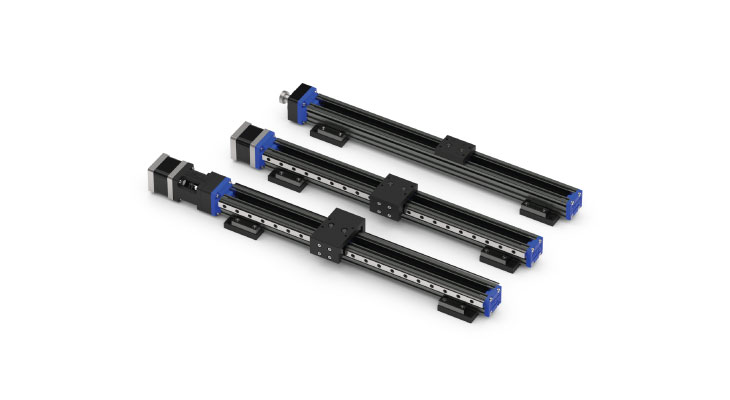How Linear Actuators Improve HVAC Performance

Until the recent emergence of new heating, ventilation, and air conditioning (HVAC) demands for green buildings, the HVAC industry historically developed systems and supporting ductwork designed for overcapacity. However, maximizing HVAC efficiency to reduce energy consumption for today's green buildings has become the overriding goal. This results in the need to more precisely match HVAC system capacity to a building's specifications and more tightly control HVAC performance through integrated, automated building technologies.
One of the ways to accomplish this is to manage and optimize airflow within HVAC ducts through intelligent valves, dampers, and automated control systems. This article will examine how the use of linear actuators driven by lead screws is helping HVAC professionals meet the unique requirements of this type of application.
Controlling HVAC Duct Valves with Lead Screws
Consider the example of a six-foot-by-six-foot duct valve located 30 feet above a manufacturing process facility floor. The baffle within the duct needs to be adjusted periodically to maintain proper airflow throughout the building. To configure the most suitable lead screw linear actuator to open and close the duct valve, you need to know the loads, duty cycle, and other operational details—such as the presence or absence of accumulating dust or particulates. Other application specifications might look something like this: With linear actuators using lead screws, HVAC systems can automatically, dynamically, and efficiently control duct valves and dampers through programmable thermostats, maximizing HVAC efficiency in the process.
- Limit switches needed
- The maximum stroke is 18 inches
- Desired design life is 20 years
- The cylinder will be compression
- The mechanism must be mounted overhead
- The maximum speed is 32 inches per minute
- Actuation cycle: two times per day; 365 days per year
- The maximum force to open and close the valve under maximum airflow is 2,000 pounds
With this type of information in hand, you can configure the most suitable lead screw linear actuator to make adjustments to the duct valve with a high degree of precision and reliability. In this application, the lead screw is connected to the damper blade inside the HVAC duct valve and pivots on the nut to open or close. This can be achieved either through the use of an adjustable, manual weight, which will open or close the valve in response to the pressure within the duct, or as part of an automated, computer-controlled system.
Replacing or Retrofitting Duct Valves with Intelligent Actuators
Intelligently controlled lead screw linear actuators can also be used to replace or retrofit existing duct valves. Lead screw-driven actuators are typically available with either analog or digital controls for this purpose, enabling easy connection and integration with existing HVAC systems. Motion control options include:
- Open/Close or On/Off
The lead screw linear actuator can be driven to either its fully extended or fully retracted position to open or close a valve or turn a system control on or off. - Proportional Controls
The actuator drives the lead screw in proportion to its control input and/or modulates throughout its rotation angle. - Pulse Width Modulation
The lead screw linear actuator can be driven to a specific position based on the duration of the pulse, which is sent from a dry contact closure, a Triac sink, or a source controller. - Phase Cut
The actuator drives the lead screw proportionally following the power of the remaining wave after a control signal cuts its amplitude.
HVAC Linear Actuator Systems
Linear actuators driven by precision lead screws can help improve the efficiency and performance of HVAC systems. Lead screws provide the smooth performance and quiet operation required to control ductwork dampers and valves, enabling you to optimize HVAC performance and reduce energy usage in today's new generation of energy-efficient buildings.


